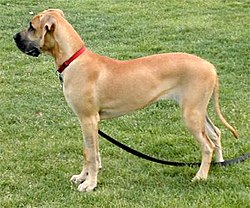| Fawn | |
|---|---|
| Common connotations | |
| Dog coat | |
| | |
| Hex triplet | #E5AA70 |
| sRGB B (r, g, b) | (229, 170, 112) |
| HSV (h, s, v) | (30°, 51%, 90%) |
| CIELChuv (L, C, h) | (74, 63, 46°) |
| Source | X11 |
| ISCC–NBS descriptor | Moderate orange yellow |
| B: Normalized to [0–255] (byte) | |

Fawn is a light yellowish tan colour. It is usually used in reference to clothing, soft furnishings and bedding, as well as to a dog's coat colour. It occurs in varying shades, ranging between pale tan to pale fawn to dark deer-red. The first recorded use of fawn as a colour name in English was in 1789. [1]